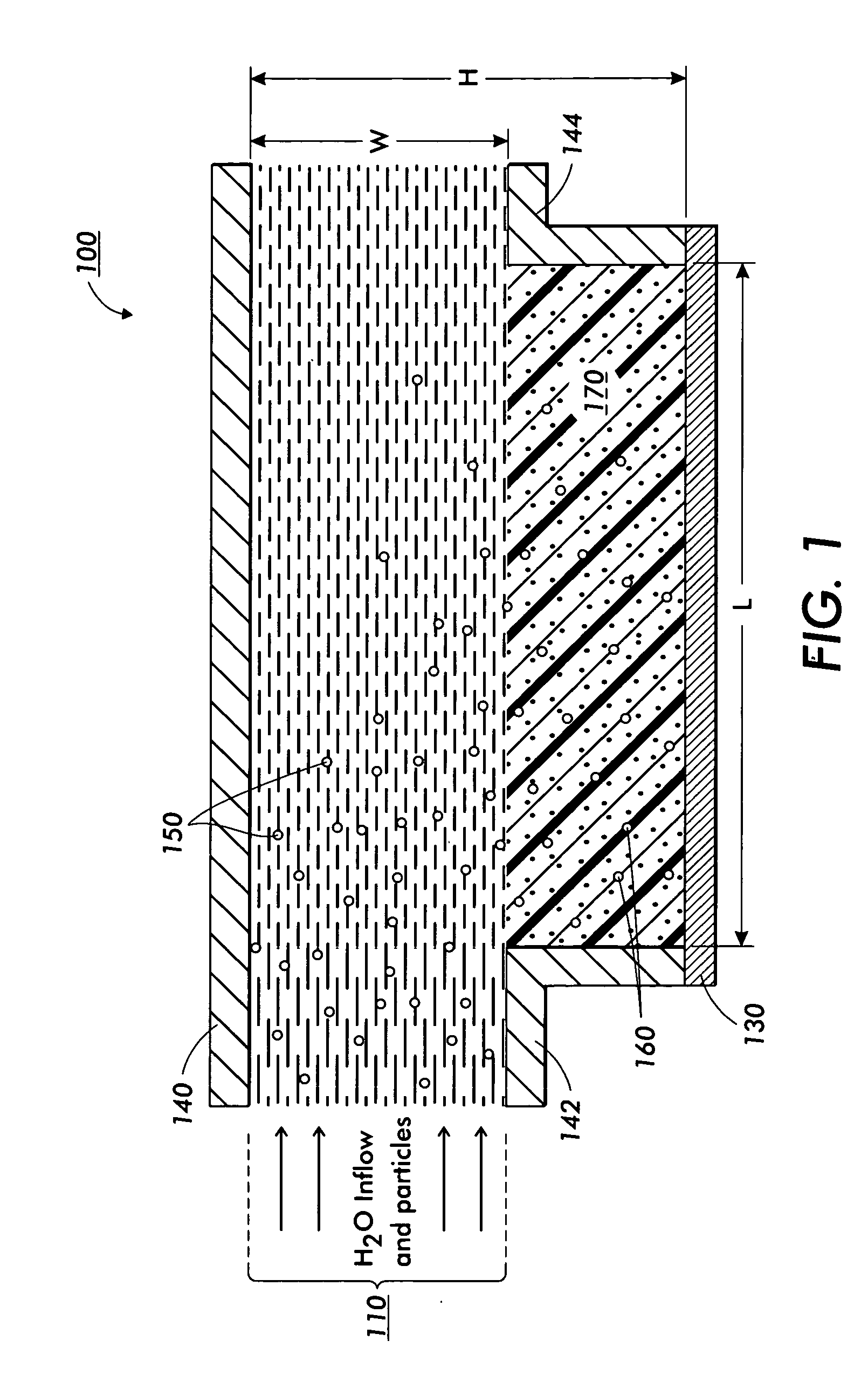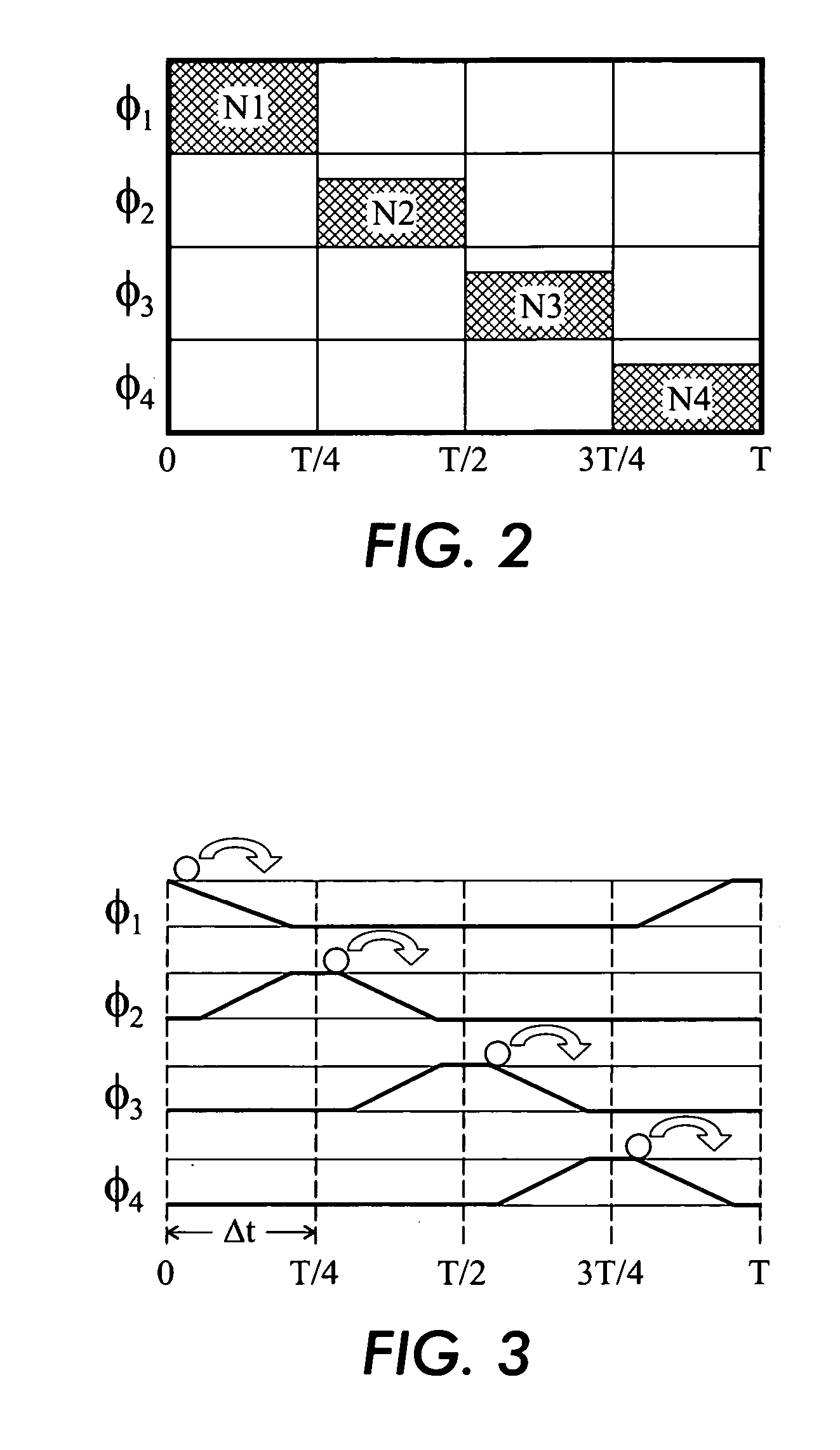Continuous flow particle concentrator
a concentrator and continuous flow technology, applied in the field of electrophoretic separation of bioagents and particles, can solve the problems of fatal consequences, inability to readily compatible with conventional laboratory equipment, and based on micro-device technology, and achieves the effect of reducing the cost of tff, saving labor costs, and avoiding the use of
- Summary
- Abstract
- Description
- Claims
- Application Information
AI Technical Summary
Benefits of technology
Problems solved by technology
Method used
Image
Examples
Embodiment Construction
[0025] The continuous flow particle concentrator uses electrostatic fields and traveling wave grids to extract charged bio agents, such as bio-molecules, viruses, bacteria, etc., from a large volume of liquid (up to many liters) and concentrate or focus them into a small volume (several cubic millimeters) for detection. To allow for continuous screening, the extraction process takes place while the liquid is flowing through a channel. Bio matter is initially deposited onto a surface patterned with a planar inter-digitated electrode grid. The inter-digitated electrodes are driven in 4-phase (or n phases with n>2) with a traveling wave (TW) of voltage pulses to move the deposited biomatter to an edge where another orthogonal TW array moves the bio matter to a sample well, resulting in concentration of several orders of magnitude, thus increasing sensitivity for bio-agent detection. The concentrator may be utilized for all material with a net charge and may serve either as a supplement...
PUM
 Login to View More
Login to View More Abstract
Description
Claims
Application Information
 Login to View More
Login to View More - R&D
- Intellectual Property
- Life Sciences
- Materials
- Tech Scout
- Unparalleled Data Quality
- Higher Quality Content
- 60% Fewer Hallucinations
Browse by: Latest US Patents, China's latest patents, Technical Efficacy Thesaurus, Application Domain, Technology Topic, Popular Technical Reports.
© 2025 PatSnap. All rights reserved.Legal|Privacy policy|Modern Slavery Act Transparency Statement|Sitemap|About US| Contact US: help@patsnap.com



